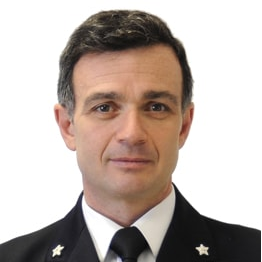Selected Papers from the 2019 IMEKO TC-19 International Workshop on Metrology for the Sea
A special issue of Sensors (ISSN 1424-8220). This special issue belongs to the section "Intelligent Sensors".
Deadline for manuscript submissions: closed (15 April 2020) | Viewed by 33893
Special Issue Editors
Interests: digital signal processing in telecommunications; data converter characterization; medical measurement; standardization; unmanned aerial systems (UASs)
Special Issues, Collections and Topics in MDPI journals
Special Issue Information
Dear Colleagues,
The 2019 IMEKO TC-19 International Workshop on Metrology for the Sea (http://www.metrosea.org/home) will be held in Genova, Italy, 3–5 October 2019.
MetroSea aims to gather people who work in developing instrumentation and measurement methods for the sea. Attention is paid but not limited to new technology for sea environment monitoring, metrology-assisted production in the sea industry, ship component measurement, sensors and associated signal conditioning for the sea, and calibration methods for electronic testing and measurement for marine applications.
Topics:
- Electronic instrumentation for the sea;
- Automatic test equipment for the sea;
- Sensors and sensor sensing systems for sea applications;
- Wireless sensor networks for marine applications;
- Monitoring systems for the sea;
- Metrology for navigation and precise positioning;
- Measurements for submarine obstacle detection;
- Underwater vehicles for exploration;
- Pollution detection for reclamation;
- Submarine infrastructure maintenance and reliability;
- Signal and image processing;
- Metrology and quality assurance for submarine soldering;
- Weather forecasting and nowcasting for maritime navigation;
- Measures for marine biology;
- Measures for marine geology.
Authors of papers related to sensors presented at the workshop are invited to submit extended versions of their work to this Special Issue for publication.
Dr. Eulalia Balestrieri
Dr. Maurizio Demarte
Guest Editors
Manuscript Submission Information
Manuscripts should be submitted online at www.mdpi.com by registering and logging in to this website. Once you are registered, click here to go to the submission form. Manuscripts can be submitted until the deadline. All submissions that pass pre-check are peer-reviewed. Accepted papers will be published continuously in the journal (as soon as accepted) and will be listed together on the special issue website. Research articles, review articles as well as short communications are invited. For planned papers, a title and short abstract (about 100 words) can be sent to the Editorial Office for announcement on this website.
Submitted manuscripts should not have been published previously, nor be under consideration for publication elsewhere (except conference proceedings papers). All manuscripts are thoroughly refereed through a single-blind peer-review process. A guide for authors and other relevant information for submission of manuscripts is available on the Instructions for Authors page. Sensors is an international peer-reviewed open access semimonthly journal published by MDPI.
Please visit the Instructions for Authors page before submitting a manuscript. The Article Processing Charge (APC) for publication in this open access journal is 2600 CHF (Swiss Francs). Submitted papers should be well formatted and use good English. Authors may use MDPI's English editing service prior to publication or during author revisions.
Benefits of Publishing in a Special Issue
- Ease of navigation: Grouping papers by topic helps scholars navigate broad scope journals more efficiently.
- Greater discoverability: Special Issues support the reach and impact of scientific research. Articles in Special Issues are more discoverable and cited more frequently.
- Expansion of research network: Special Issues facilitate connections among authors, fostering scientific collaborations.
- External promotion: Articles in Special Issues are often promoted through the journal's social media, increasing their visibility.
- e-Book format: Special Issues with more than 10 articles can be published as dedicated e-books, ensuring wide and rapid dissemination.
Further information on MDPI's Special Issue polices can be found here.







